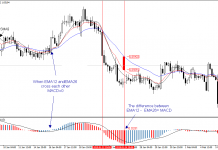 Many trading beginners using Elliott Wave Principle have a problem with the practical exploitation of the gained knowledge. What is the biggest problem? Most likely numerous alternatives that arise when determining wave systems, as well as markets moves which are perfectly only in a small percentage of the time.
Many trading beginners using Elliott Wave Principle have a problem with the practical exploitation of the gained knowledge. What is the biggest problem? Most likely numerous alternatives that arise when determining wave systems, as well as markets moves which are perfectly only in a small percentage of the time.
I decided to gather the necessary knowledge to show you how practically use the theory of wave to build a trading system. What is more I will show my own trading behaviors and explain them step by step.
This is not a description of the whole principle (you can find it in the books, etc.), only the selected element that allow beginners to easily get through this demanding subject.
The Basics
Market – according to the waves principle – moves according to a certain pattern. Five waves in one direction gives an impulse which is followed by three waves of correction and the whole process begins again – only from higher cycle.
I propose to focus on a single five-wave pattern and simple correction that occurs during its development and after its completion. In short, I am interested only in the first pulse and the rest does not matter to me. Basin principles of impulse:
-Wave 2 never abolish more than 100% of wave 1,
-Wave 4 more than 100% of wave 3,
– Wave 3 always goes above the end of wave 1,
– Wave 3 is never the shortest wave,
– Wave 4 does not enter into the area of wave 1.
Impulse wave looks like this:
A very useful tool for the waves determination is Awesome oscillator – available on almost every trading platform (it compares momentum as the rate of change in prices including five period with a 34 MA).
The biggest swing on the oscillator shows us that we are dealing with the third wave. If after finding third wave, oscillator comes down to he zero vicinity and starts another swing in the same direction creating a divergence with previous swing, it will mean a creation of a fifth wave.
To determine the end of the fifth wave we usually use MA7 shifted by 5 to the right. Breaking this average with candlestick pattern indicates the end of the wave-5. Now let’s take a look at useful retracements and ranges, which makes determination of the entry and exit position really easy. Statistically speaking:
-Second wave retraces mostly 50% or 60% of the first wave,
– Fourth wave retraces mostly 38% or 50% of the third wave.
We are also dealing with other retracements, like 24% of the third wave. However, I believe that there is enough space to build an appropriate correction to play fifth wave – so I am skipping such retracements.
Another example is the retracement of first wave 75%, which statistically is skipped, but in some cases, such as the irregular correction, it works very well and should be taken into account. For me it is critical retracement for impulse and its defeating is a warning for me to leave such formation.
I have marked retracement that should interest us in red.
Ranges
Third wave is mostly 1.62 or 2.52 of the first wave.
If the third wave is bigger than 1.62 of the first one, then fifth wave is equal to the first wave or is 1.62/2.62 bigger than it.
If the third wave is shorter than the 1.62 of the first five, the fifth wave will be 0.62, 1.62 or equal to the distance calculated from the begging of the first wave to the end of the third wave.
I am personally interested in the dependency, where the third wave is the longest and is 1.62 times bigger than the wave-1 (wave-1 = wave-5).
Here is an example in which the third wave is 1.62 times bigger than the first one. We expect that wave will be as same as the wave-1 or 1.62/2.62 of its length.
Statistically, most commonly the third wave is in the range 1.62-2.62 of the first wave length.
Corrections
I use only to types of corrections:
Zig-zag, which is a three-wave simple correction. It takes the form of 5-3-5 or five wave opposite to the impulse, three wave in its direction and again five opposite waves. They are described as ABC:
-Wave B has about 50% of wave A,
– Wave B should not retrace more than 75% of wave A
– Wave C is either ewqual to wave A or 1.62/2.62 times longer than it
– Wave C often creates a divergence with A wave on Awesome oscillator. I note only those situations where wave A equals wave C.
The second type of correction – ideally suited for trading usage – is a irregular correction. This is the type of correction with the 3-3-5 structure, where wave B makes a new high, breaking above the impulse wave top, when wave C goes beyond the end of wave A.
-Wave B is 1.15 or 1.25 of wave A.
– According to my experience, the maximum level for wave B is located near the 1.25 and 1.62 of wave A.
– Wave C is 1.62 or 2.62 of wave A.
This is my favorite corrective formation. it occurs everywhere and in very large quantities.
In fact, you do not have to know more when you want to start trading with Elliott Wave strategy.
How to play
I only trade in two cases, which I will describe below.
The first is the beginning of the impulse in one direction and its irregular correction. The second one is the wave pulse and a zigzag correction. I will explain how I am doing it step by step.
Step 1:
Find an impulse in the form of five-wave movement in any direction. Deliberately omit the correction designation of lower stream waves. This is just a decision-making mechanism example. Honestly speaking, you do not have to worry much about what is inside the structure – we can leave it for professional analysts.
Step two:
Check if the end of the impulse does not have the additional three-wave structure as in this case. If it has then just mark retracement for impulse wave – you should focus only on 50%, 62% and 75%.
Step three:
I set the range for wave C. As you can see in the screenshot below, two retracements overlap each other. 50% of the impulse wave and the 2.62 of wave A range.
Additionally I check if such place does not have something important such as trend line or S/R. It is not necessary, but always something additional to reinforce the move.
Step four:
Enter the position after any candle pattern known from Price Action. The level of defense should be put over the critical retracement (75%).
TP can be set in two different ways. In first we just observe the price behavior and look for level that give adequate RR. In the second way we try to draw a third wave range based on the first one.
The second case is a zig-zag
Step one:
Look for impulse wave in any direction. Then look form ABC correction in the 5-3-5 scheme. In the irregular correction wave C does not necessarily have to have a five-wave character (sometimes it happens that the range of wave C is insufficient and five-wave structure changes in zigzag). However, in this case it has to be five-wave.
I am looking for such corrections only in two places. The first one is 50-62% retracement of first wave and the second one is 38-50% retracement of fourth wave. However, in the case of wave number four the oscillator always must occur in the vicinity of zero.
Step two:
I mark wave C range as 1:1 with wave A. As you can see in the screenshot, it coincides with the 38% retracement.
All oscillator conditions also have been met.
Next we should see – as in the abovementioned case of an irregular correction – if this point does not coincide with trend line, S/R, etc.
In this case it coincided with a really strong resistance, which enhances this very level.
Step three:
We are going to a lower TF in order to accurately determine the five-wave structure. Entry takes places after any candle formation and the DMA intersection.
That would be it. I hope this material was useful and you will be able to take advantage of wave system in a less subjective manner.





























